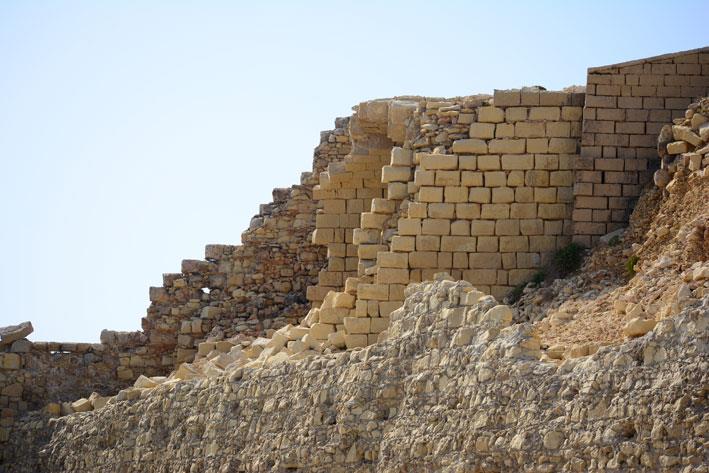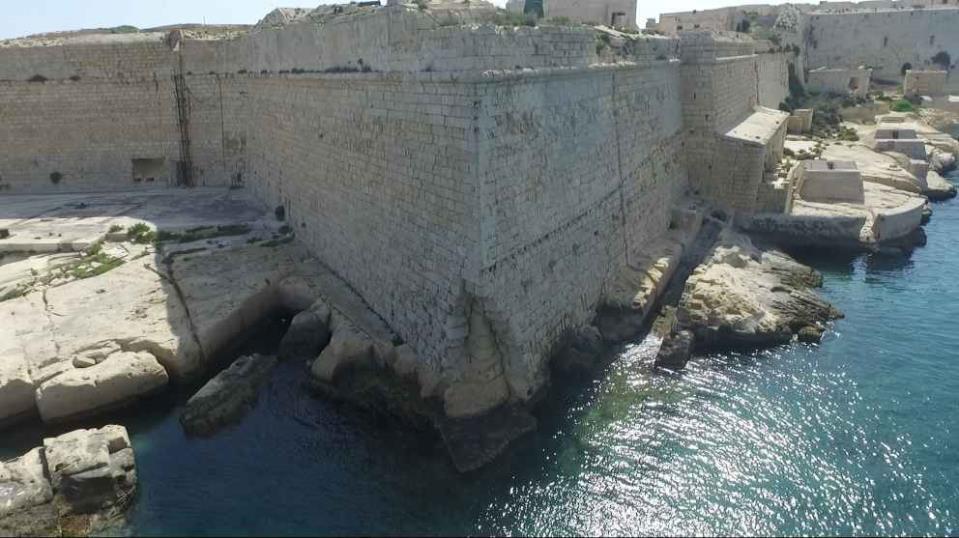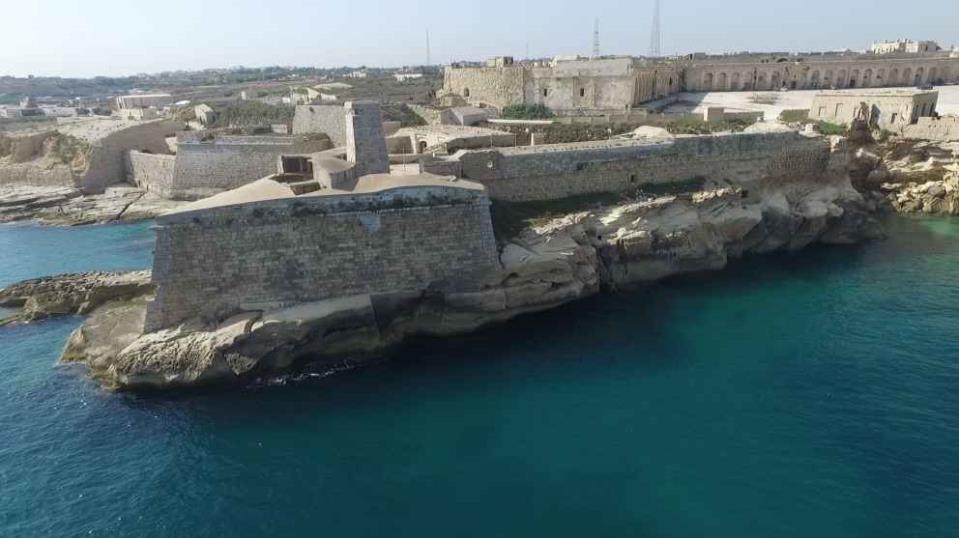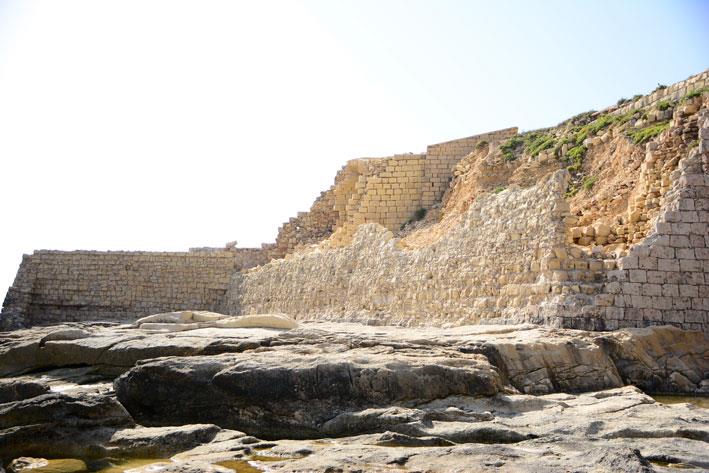Heritage NGOs have renewed their calls for the authorities to take immediate action and draw up plans to save Fort Ricasoli, which is not so slowly being eaten up by the sea.
The fortress, built by the Knights of St John in the late 17th century, is the largest fortification in Malta. Along with Fort St Elmo on the other side of Grand Harbour, Fort Ricasoli suffers the brunt of huge waves during the winter months. As a result, parts of the fort have already been lost forever, and the situation is only getting worse.
This newspaper paid a visit to the site earlier this week, after new pictures of the damage that the fort has suffered were posted on social media.
A substantial part of one of the inward-looking sea bastions has collapsed, with stone slabs missing, presumably lying on the seabed. Perhaps more worryingly, a huge crack has appeared in the bastion further up – running from top to bottom and raising fears that a much larger section of the fort could soon come crashing down.

Many structures inside the fort lie in a dilapidated state, with roofs caved in and stonework eaten up by time and erosion. The seaward side of the fort has also suffered severe damage over the years. Towards the middle of the fort, large sections of the bastions have fallen into the sea, the rock beneath them having been eroded by the waves.
To the rear, outside the walls of the main fort, lies St Domenic’s counterguard. Most of its seaward side collapsed many years ago and, from the sea, this fortification looks more like a huge pile of rubble. Astonishingly, the building is still accessible to the public, despite the dangers posed.

The last time major repairs were carried out on Fort Ricasoli was in 2004 but only a small section of the walls were restored in the Lm110,000 (€255,000) project.
Battered by sea storms
Speaking to The Malta Independent, president of Fondazzjoni Wirt Artna Mario Farrugia said Fort Ricasoli is not only Malta’s largest historic fort but also one of the most visible.
He explained that the fort is in a very exposed location, making it prone to wild Gregale (north-easterly) seas. In rough weather, the fort is literally engulfed by the monster waves.

“Over the years, the fort has been shamefully left to collapse”, said Farrugia, “and despite all the hullaballoo about its use by the film industry, its condition has been allowed to get progressively worse and worse. Large parts of its sea-facing walls are irretrievably lost to the sea and in places its stonework has deteriorated beyond redemption.”

Artificial reefs to tame the waves
However, Farrugia insists that the grand fort “is worth saving – and saved it must be. FWA has long been campaigning for the restoration of this fort and has done this in many ways – not least by convincing the government to establish the Film Users Restoration Fund into which a contribution is made by the filming companies making use of the fort for their productions.”
Unfortunately, the fund, first used after the filming of Gladiator in 2000, has since been abandoned.

“If Fort Ricasoli is to be saved, there needs to be the political will. Without this, nothing will be done and the fort will be lost forever,” said the FWA president.
He said that there needs to be a well-thought-out plan that would first see that all parts in danger of collapsing are properly shored up, all water entry is stopped and that the waves are tamed by using artificial reefs located some distance out at sea.

“Then, a sympathetic use for the whole of the fort – one which ideally should also be self-sustainable – should be found. Opening it up as a heritage attraction will be good but that alone will never generate enough funds for its maintenance. Hence, a mixed-use approach may be considered, which could still include film-making.”
Farrugia said that the fort is probably the largest building in Malta, so that alone should offer huge opportunities. “But one should see at that as an opportunity and an asset, not just as a problem to be resolved.”

Suitable re-use
Din l-Art Helwa president Maria Grazia Cassar said that the fort has been in a state of decline for many years, and reports on its condition have even been published in the organisation’s magazine Vigilo.
She said that a holistic conservation and restoration programme should be in place, to prevent further damage and mitigate the risks of it being lost, especially on the seaward side.
“As one of the most important heritage sites in Malta, a suitable re-use should be sought, which would make it accessible to the public, even with restrictions if necessary,” said Cassar, adding that the recent restoration of the main gateway was commendable.
Over the past few months, appeals for the conservation of the fort have been launched by Partit Demokratiku, the Kalkara Heritage Association and Labour MP Glenn Bedingfield, among others.

A brief history
Fort Ricasoli was built by the Order of the Knights of Saint John between 1670 and 1698. It occupies a promontory known as Gallows’ Point and the north shore of Rinella Bay, commanding the entrance to Grand Harbour along with Fort Saint Elmo.
The fort saw action during the French invasion of Malta in 1798. Its garrison held out against the French until Grand Master Hompesch capitulated to Napoleon Bonaparte.
It was later taken over by the British, who used it as part of the harbour defences and in later years it was used as military hospital – at one point housing patients during a cholera outbreak.
Parts of the fort were damaged during the aerial bombardments of World War II.

HMS Ricasoli was decommissioned in the 1960s and its role changed into an industrial one. Part of the inward side of the fort is used by a ship tank cleaning facility while most of the upper part is used for film production.
The fort was famously used for the production of Ridley Scott’s Gladiator in 2000 and other productions partly filmed there include Troy (2004), Agora (2009) and Assassin’s Creed (2016).
The first season of Game of Thrones used various parts of the fort to represent the ‘Red Keep’.
Drone footage/photos: James Caruana/Neil Camilleri